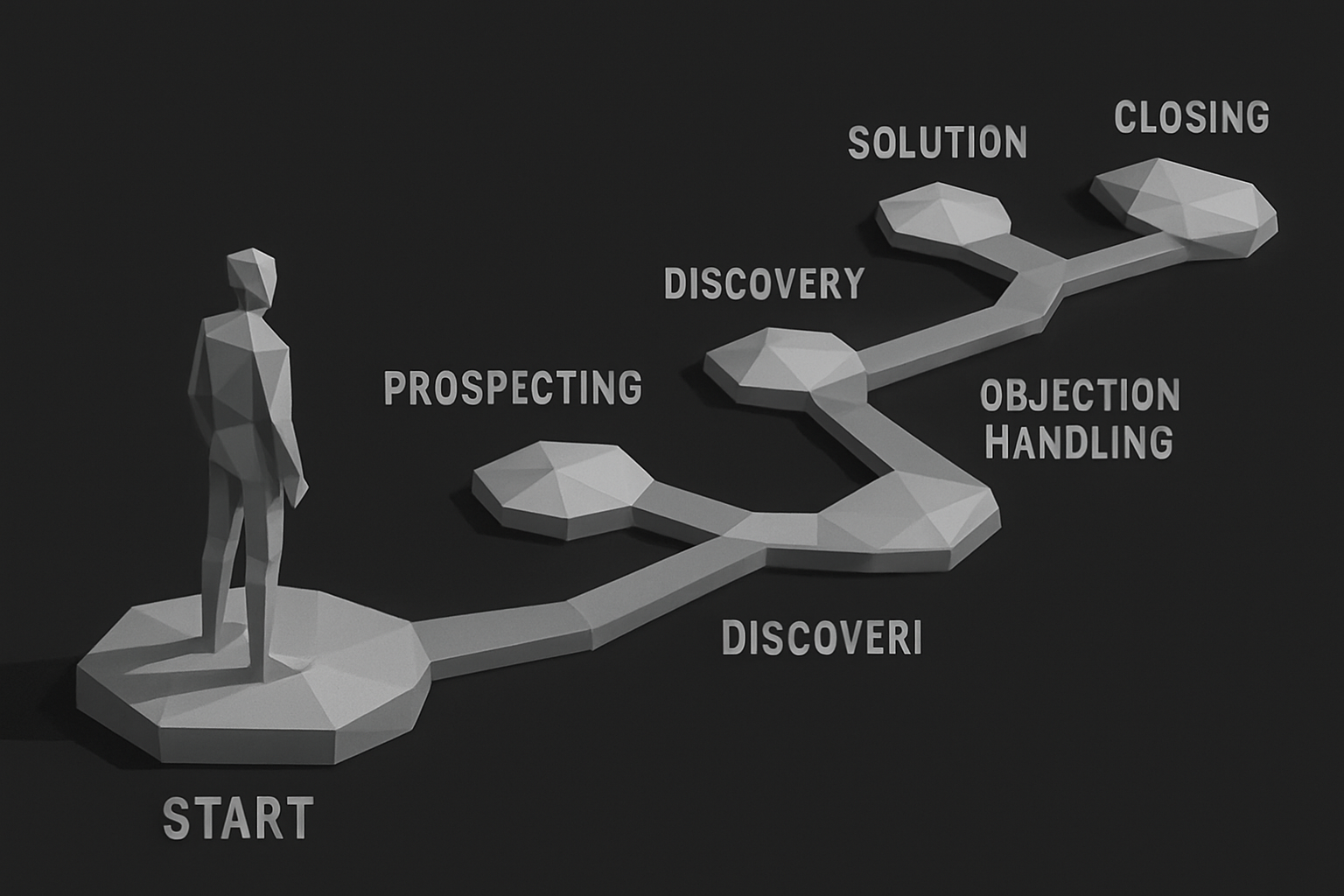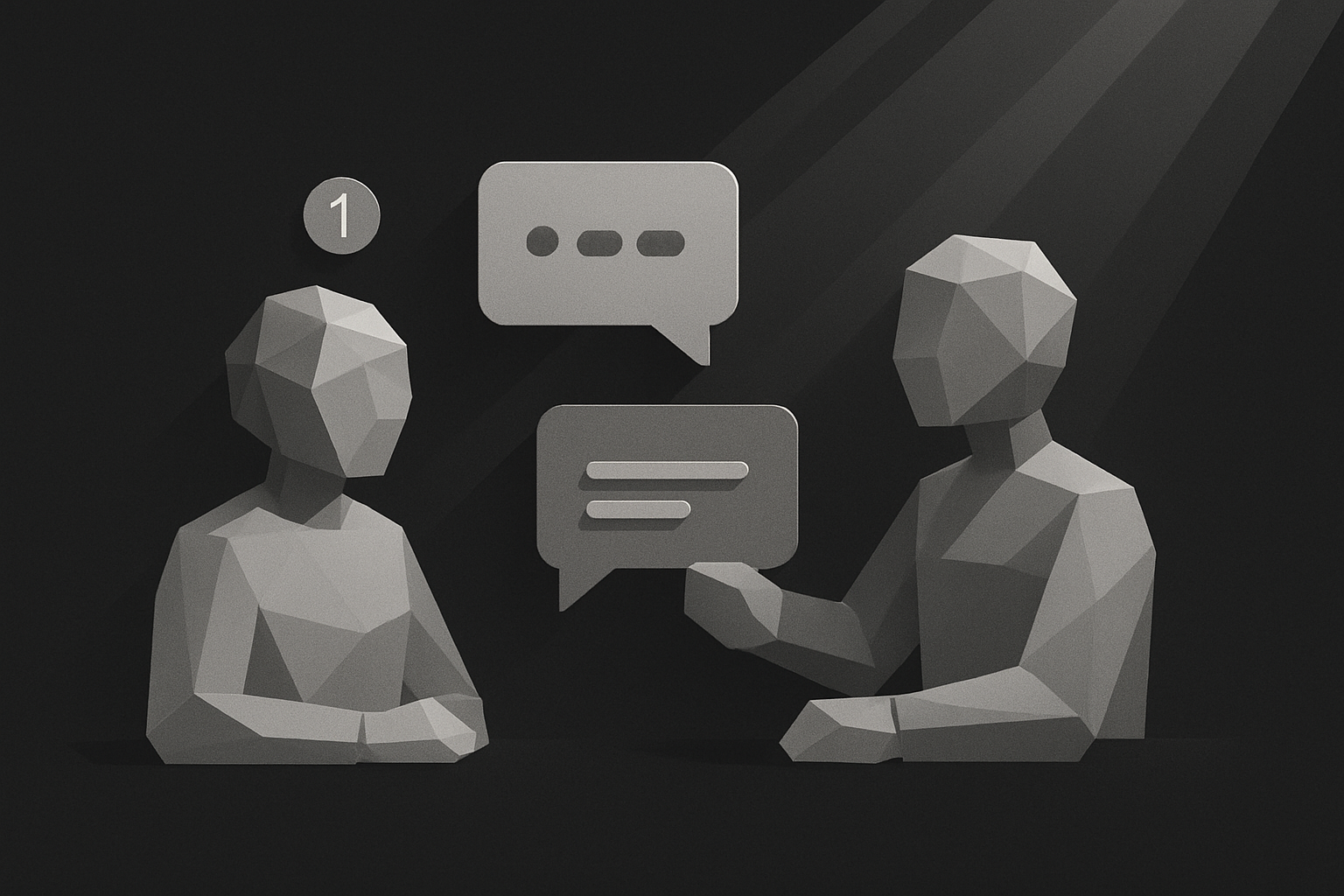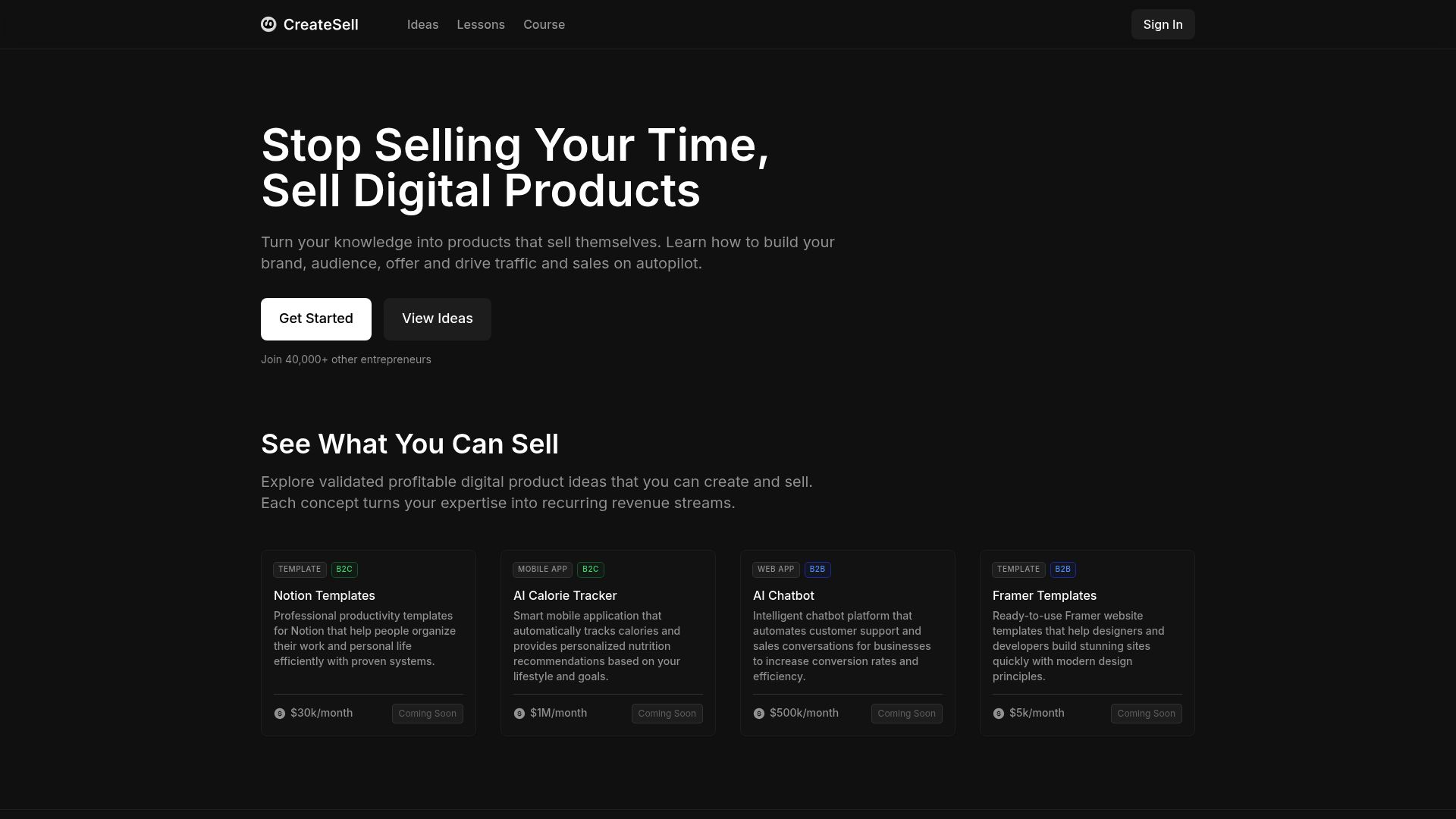In 2025, knowing how to learn how to sell will set you apart—whether you’re running a business, pitching an idea, or simply advancing your career. Selling isn’t just about products anymore; it’s about persuading, connecting, and standing out in an increasingly digital world. Yet, many struggle with outdated beliefs or uncertainty about how to start. This guide promises clear, actionable strategies for anyone who wants to learn how to sell, covering the essentials, buyer psychology, the latest digital tactics, a step-by-step sales process, and expert advice to help you thrive in the year ahead.
The Fundamentals of Selling in 2025
In the fast-moving landscape of 2025, to learn how to sell is to unlock a foundational skill that extends far beyond traditional sales roles. The fundamentals of selling have evolved—today, everyone from engineers to entrepreneurs needs to understand how to connect, persuade, and deliver value. Let’s break down the essential building blocks you need to thrive.

Understanding What Selling Really Means
To learn how to sell in 2025 means embracing sales as problem-solving, not just persuasion. The best sellers act as consultants—listening, analyzing, and guiding customers to the right solution. This shift from transactional to consultative selling is everywhere, from SaaS to retail.
Sales skills are now critical across all roles and industries. For instance, in technical sales, expertise and empathy often close deals over flashy pitches. According to LinkedIn's 2024 Most In-Demand Skills, sales is among the top five skills requested by employers. Remember: when you learn how to sell well, the process feels invisible—the customer convinces themselves.
The Psychology of Sales: How Buyers Think
Understanding how buyers think is vital if you want to learn how to sell. In 2025, decisions are made through a mix of logic and emotion, but trust and credibility tip the scales. Buyers gravitate toward sellers who tell relatable stories and offer genuine testimonials.
For example, a video testimonial often outperforms a list of features because it builds emotional resonance. Data shows that 70% of buyers say trust in the seller matters more than price. When you learn how to sell through trust, your message lands with lasting impact.
Mastering Product and Market Knowledge
You can’t learn how to sell without deep product and market knowledge. Charisma helps, but understanding your offering—and your customer’s pain points—is what closes deals. Imagine an oscilloscope salesperson: technical expertise and thoughtful questions beat generic pitches every time.
Researching competitors and staying on top of market trends is non-negotiable. Customers aren’t looking for a sales pitch—they want a solution that fits. When you learn how to sell by focusing on solutions, you become a valued advisor, not just a vendor.
The Sales “Dance” and Building Rapport
Think of selling as a dance—adapting your style to match the customer’s culture and expectations. To learn how to sell effectively, start by making the customer comfortable. Small gestures, whether it’s grabbing coffee or choosing the right attire (suit or t-shirt?), can make a big difference.
Initiate sales conversations with consent, not pressure. Rapport isn’t just about being friendly; it’s the bedrock of trust. The more you learn how to sell by building authentic relationships, the more successful your outcomes.
The Modern Sales Cycle: Steps and Expectations
The modern sales cycle in 2025 is structured yet flexible. When you learn how to sell, you’ll move through key stages: prospecting, discovery, solution presentation, objection handling, and closing. Each step requires unique skills and attention.
Understanding these stages boosts professionalism and results. The average B2B sales cycle now spans several weeks, according to recent Gartner reports. Mastering every phase ensures a seamless experience for both seller and buyer—and sets you apart in a crowded field.
Step-by-Step: The Sales Process for 2025
Mastering the sales process in 2025 means breaking it down into clear, actionable steps. Whether you’re new or a seasoned pro, understanding these phases will help you learn how to sell with confidence and consistency.

Step 1: Prospecting and Lead Generation
The journey starts with identifying who you want to reach. In 2025, prospecting is about more than just cold lists—it’s about defining your ideal customer and using digital tools to find matches. AI-driven prospecting and platforms like LinkedIn let you pinpoint prospects who are most likely to benefit from what you offer.
Personalization is key. Using data, you can tailor your outreach and dramatically increase your chances of a response. For those looking to learn how to sell digital products, resources like the Building digital products blog provide practical tips on finding and qualifying leads online.
Top sellers use social selling tools to engage prospects where they are—78% of high performers leverage these platforms. Make every interaction count by focusing on quality over quantity.
Step 2: First Contact—Making a Strong Impression
Your first outreach sets the tone. Whether it’s a cold email, call, or direct message, brevity and clarity are your best friends. In 2025, people are busier and more selective than ever, so your pitch must be concise and compelling.
Start with an attention-grabbing subject line or opener. Avoid generic templates—personalized messages stand out and show you’ve done your homework. When you learn how to sell, you realize that authenticity always wins over hard-sell tactics.
Keep it conversational, not robotic. Respect the recipient’s time and avoid manipulative language. Data shows that personalized outreach consistently outperforms bulk messaging in response rates.
Step 3: Discovery and Needs Assessment
Now it’s time to dig deeper. The discovery phase is where you ask open-ended questions and listen—really listen. The best way to learn how to sell is to focus less on pitching and more on understanding.
Active listening helps you uncover pain points and goals the customer might not even articulate. Use this stage to qualify if the lead is a good fit or if it’s better to move on. Remember, the top sellers talk less and listen more, letting customers reveal what truly matters to them.
This consultative approach ensures you’re solving real problems—not just pushing a product.
Step 4: Presenting Solutions and Storytelling
With knowledge in hand, tailor your pitch to the customer’s specific challenges. Storytelling is a powerful tool—buyers remember stories far more than statistics. When you learn how to sell effectively, you weave testimonials and relatable examples into your presentation.
Show, don’t just tell. Use visuals, mockups, or case studies to help buyers imagine success with your solution. A well-placed story can turn a feature list into a memorable, persuasive narrative.
Help your customer see themselves winning. This not only builds excitement but also deepens trust—crucial for closing the deal.
Step 5: Handling Objections and Building Confidence
Objections are a natural part of the sales process. Instead of seeing them as roadblocks, view them as opportunities to engage and educate. When you learn how to sell, you realize that objections mean your prospect is interested enough to ask tough questions.
Acknowledge concerns and reframe them as stepping stones. Encourage honest feedback—even a “no” can provide valuable insights for refining your approach.
Remember, objections are signs of engagement, not rejection. Address them with empathy and clarity to build lasting confidence.
Step 6: Closing the Deal
The final step is recognizing when your prospect is ready. Watch for buying signals—verbal cues, questions about next steps, or requests for details. There are many closing techniques, but the best is one that feels natural and pressure-free.
When you learn how to sell in longer cycles, like institutional or B2B sales, patience and persistence pay off. Timely follow-ups can boost your close rate by up to 50%.
Celebrate each win, but also use every close—successful or not—as a learning experience. Every deal helps you refine your process for the next opportunity.
The Art of Follow-Up: Persistence Without Annoyance
Mastering the art of follow-up is where many who want to learn how to sell either shine or stumble. In 2025, deals are rarely closed on the first try. Instead, success often comes to those who persist—without crossing the line into annoyance. Let’s break down how to follow up with finesse, ensuring your efforts are appreciated, not ignored.

Why Follow-Up Matters More Than Ever
If you want to learn how to sell in today’s world, understanding the power of follow-up is essential. Research shows that half of all sales successes come from following up after the initial contact. The psychology behind this is simple: buyers are busy, distracted, and often need gentle reminders.
Consider this: 60% of customers say “no” four times before finally saying “yes.” That means the difference between a lost opportunity and a closed deal is often just one more well-timed message. However, the risk of being marked as spam is real—balance is key.
For those looking to build a strong foundation, the Digital products guide for beginners offers practical advice on follow-up strategies, especially relevant if you’re starting to learn how to sell digital solutions.
Crafting Effective Follow-Up Communications
Crafting a follow-up that gets results is both an art and a science. When you learn how to sell, you discover that referencing your previous outreach—without sounding repetitive—is crucial. Each follow-up should offer value, be brief, and show respect for the recipient’s time.
Try using phrases like “Just checking in on our last conversation” or “This is my final follow-up—let me know if you’re interested.” Personalization goes a long way: mention a detail from your earlier chat, or tailor your message to a recent event in their business.
Consider these essentials:
- Keep messages short and direct.
- Always provide an easy opt-out.
- Use friendly, human language.
Remember, your goal isn’t to pester but to prompt a response. The best sellers know that a thoughtful follow-up can be the nudge that tips the scales.
Respecting Boundaries and Reading Signals
Learning how to sell means knowing when to keep pushing—and when to pull back. Silence can mean someone is busy, but it can also signal disinterest. The “four-level” rule helps: if you’ve followed up four times with no response, it’s usually time to move on.
Encourage prospects to give you a direct “no” if they’re not interested. This saves both parties time and keeps your pipeline healthy. Some people simply prefer not to reply—respect that boundary.
Key tips:
- Watch for cues like short replies or “not now” signals.
- Don’t take silence personally.
- Move on gracefully if there’s no engagement after several attempts.
Building trust means showing you value their time as much as your own.
Learning from Rejection and Refining Your Approach
Every “no” is a step closer to a “yes” when you learn how to sell. Rejection can be a goldmine of feedback, pointing out gaps in your pitch, timing, or even your target audience. Analyze each lost deal: was it the wrong product, the wrong time, or a misread need?
For example, if a prospect says your product lacks a key feature, that’s valuable market intelligence—use it to improve. Follow-up isn’t just about chasing leads; it’s a crucial part of validating your market and refining your approach.
Remember, the best in sales treat every interaction—win or lose—as a lesson. Continuous improvement is the secret to long-term success.
Digital Selling: Tools, Automation, and the Future
In 2025, digital transformation has reshaped what it means to learn how to sell. The days of cold calls and door-to-door pitches are fading fast. Instead, success hinges on mastering digital channels, automation, and building a reputation that draws customers in. Whether you’re selling a service, product, or idea, digital selling is now the foundation for growth.
Leveraging Digital Platforms for Sales Success
To truly learn how to sell in 2025, you need to meet buyers where they are—online. LinkedIn, email, and chat platforms are now the primary battlegrounds for attention. Social selling, through both direct engagement and partnerships with influencers, is driving B2B and B2C growth alike.
Did you know that 84% of B2B buyers begin their journey online? This means your digital presence isn’t optional—it’s essential. The most successful sellers use a blend of professional profiles, engaging content, and timely responses to nurture leads. If you’re not visible digitally, you’re invisible to most prospects.
Sales Automation: Working Smarter, Not Harder
Automation is changing the way we learn how to sell. Tools like AI-powered chatbots handle initial lead qualification, while automated email sequences keep prospects engaged without manual effort. Sales teams using automation close 30% more deals, freeing up time for creative, high-value work.
The secret is balance: automation streamlines repetitive tasks, but personal touch still wins trust. Use automation for outreach, reminders, and lead scoring, then step in with tailored communication when it matters most. This hybrid approach creates a seamless, efficient sales process that feels both modern and human.
Building Your Personal Brand as a Seller
In today’s crowded digital landscape, your personal brand is your calling card. People want to buy from experts they trust, not faceless companies. To learn how to sell effectively, invest in building authority—share your insights, success stories, and lessons learned on platforms like LinkedIn.
Consistency and authenticity are key. Sellers with strong personal brands generate 45% more leads, simply by being visible and credible. Start by posting weekly, engaging with others in your field, and positioning yourself as a valuable resource. Over time, your reputation becomes a magnet for inbound opportunities.
Creating Recurring Revenue with Digital Products
One of the most powerful ways to learn how to sell in 2025 is by shifting from one-time transactions to recurring digital revenue. Think courses, templates, or apps—products you create once and sell repeatedly. This model enables scalable, passive income and frees you from trading hours for dollars.
If you’re seeking inspiration, check out the Create Once, Sell Forever philosophy. It’s a modern approach that empowers you to package your expertise into assets that work for you around the clock. The global market for digital products is booming, so now is the time to get started.
How CreateSell Empowers Digital Sellers
CreateSell is designed for those eager to learn how to sell digital products at scale. The platform offers step-by-step guidance, from choosing profitable ideas to automating sales and building your brand. With a supportive community of over 40,000 entrepreneurs, you’ll find the resources and encouragement you need.

Their “Create Once, Sell Forever” mindset means you can build assets that generate income long after the initial launch. If you’re ready to turn your expertise into a thriving digital business, visit CreateSell.com and join a new wave of digital sellers.
Advanced Sales Skills: Going Beyond the Basics
Mastering advanced sales skills is the difference between good and great in 2025. If you want to truly learn how to sell, it’s time to move beyond scripts and start thinking like a trusted advisor. Let’s dive into the techniques and mindsets that elevate your approach—no matter what you’re selling.
Consultative and Solution Selling Techniques
If you want to learn how to sell at a higher level, switch from pitching products to solving problems. Consultative selling means you’re not just a vendor—you’re a partner. This involves deep discovery: asking questions, co-creating solutions, and running needs analysis workshops. For example, SaaS sales teams now host working sessions to map client pain points and design custom solutions. The data backs this up: consultative sellers win 62% more deals. Want to stay ahead? Focus on partnership, not persuasion, and see how your results change.
Navigating Complex and Long Sales Cycles
Enterprise deals and multi-stakeholder sales are marathon events. To learn how to sell in these environments, patience and organization are critical. You’ll deal with multiple decision makers, conflicting priorities, and long timelines. For instance, institutional sales cycles can take months—sometimes longer. The secret? Meticulous documentation, regular check-ins, and a clear process for managing influencers. Remember, relationship-building is your greatest tool for seeing big deals through to the finish line. Stay persistent, but always keep value at the center.
Cultural Intelligence and Global Selling
Today’s sellers often cross borders—virtually or in person. To learn how to sell globally, you need cultural intelligence. That means understanding everything from local dress codes to how different cultures approach meetings and negotiations. For example, a casual t-shirt might work in Silicon Valley, but a suit may be expected in Tokyo. Research shows 55% of sellers now report increased cross-border sales. Adaptability is key: match your tone, etiquette, and approach to each market for maximum impact.
Continuous Learning and Sales Mastery
Sales is a fast-moving field. If you’re serious and want to learn how to sell in 2025 and beyond, embrace continuous learning. This means reading industry forums, seeking mentorship, and tracking analytics to refine your process. According to LinkedIn Reveals Top Skills on the Rise for 2025, relationship building and strategic thinking are more valuable than ever. Stay curious, keep experimenting, and view every interaction as a chance to grow your expertise.
Ethical Selling and Building Long-Term Relationships
Integrity is your most valuable currency. In 2025, ethical selling isn’t just the right thing to do—it’s essential for success. Manipulative tactics might win a deal today, but 80% of buyers drop vendors after a bad sales experience. Focus on transparency, honesty, and creating real value. When you learn how to sell with integrity, you build relationships that last and grow your reputation for the long haul.
Now that you’ve seen how selling in 2025 is about solving real problems, building trust, and using digital tools to your advantage, it’s time to put these insights into action. Whether you’re just starting or ready to level up, you don’t have to figure it out alone—there’s a proven path to creating and selling your own digital products. If you’re ready to move from selling your time to building a business that works for you, I invite you to Get Started with CreateSell. Let’s turn your expertise into something that sells itself!